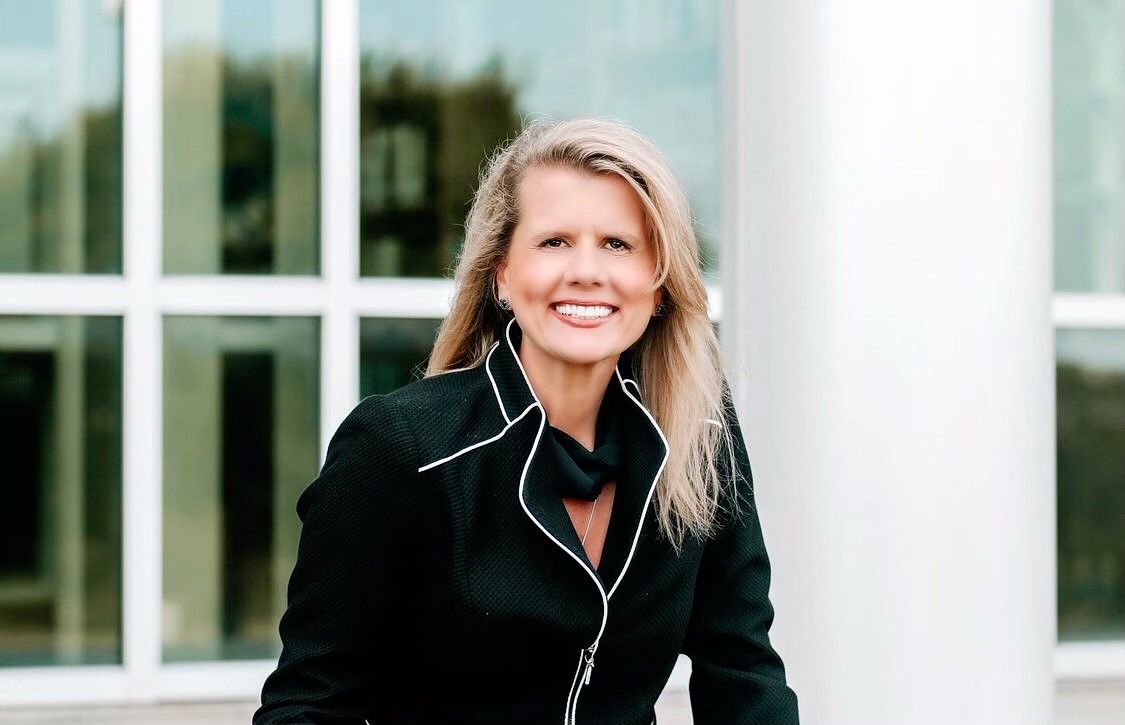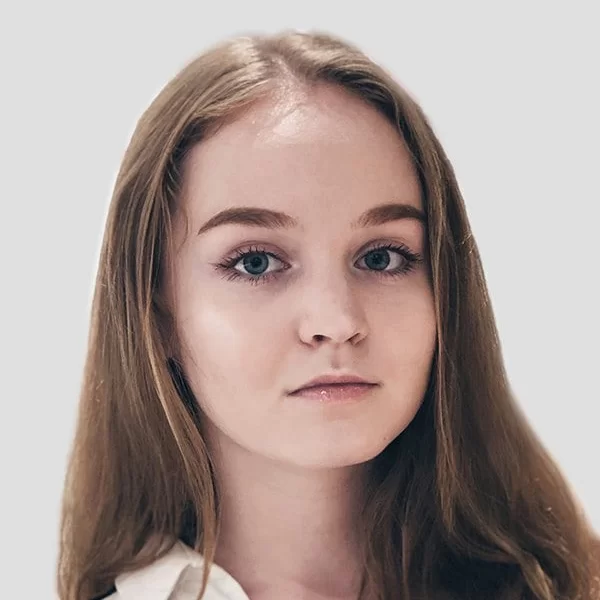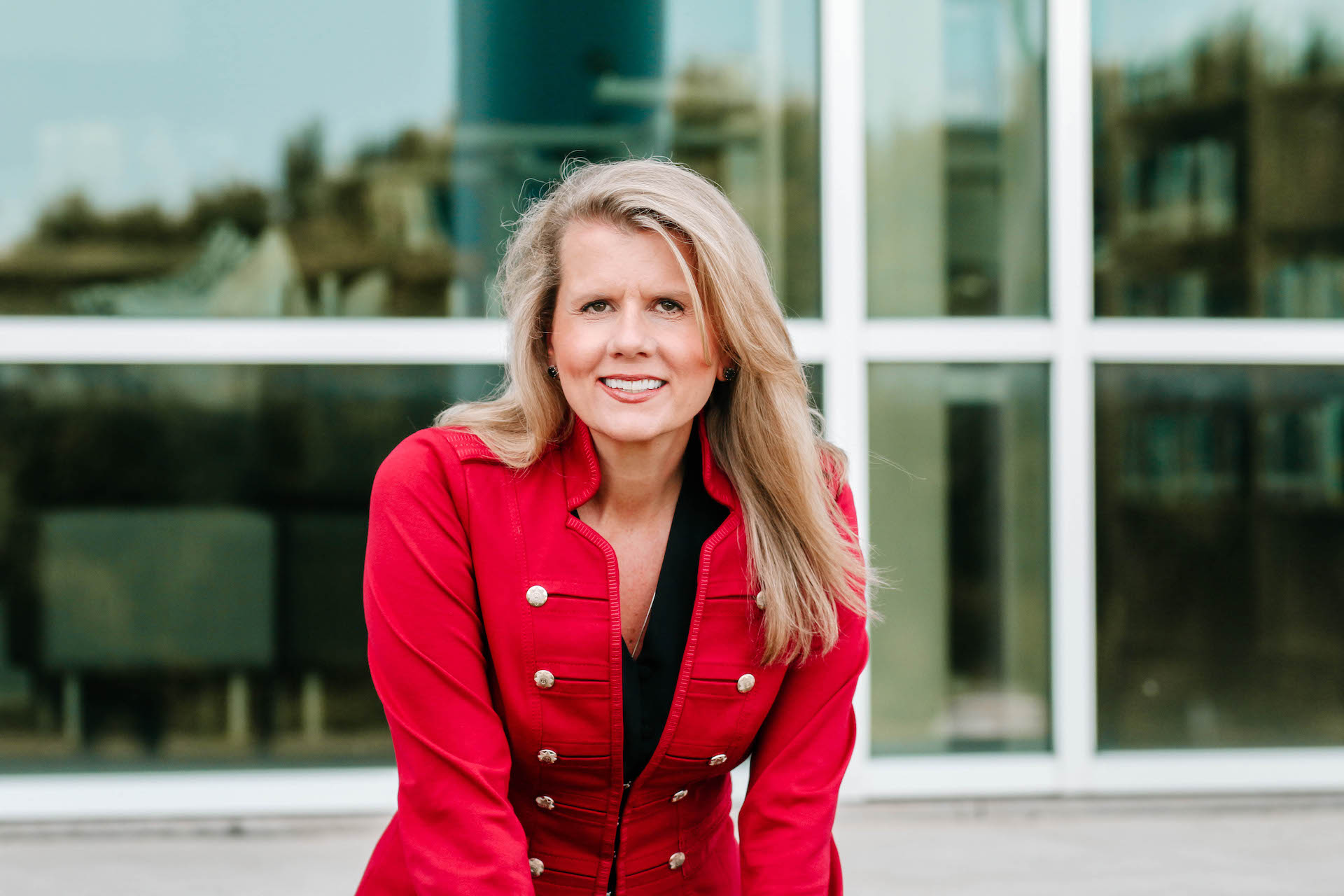Whether you have an individual architectural practice or own a large firm, there comes a time when you feel the need to grow your business. To do that successfully, it’s important not to just think about getting more clients with more expensive projects. Business development is also about improving team communication, engagement, and productivity. And at the core of it all, you need to have a rock-solid understanding of your company’s unique value proposition. But how does one do all of that? This and many more questions are answered in this interview with Dawn F. Landry — business development coach and founder of the consulting firm Authentizity.
Our architectural visualization company invited Dawn, who’s an expert at taking corporate and individual practices to new heights, to share some of her expertise with us. So, in this interview, you’ll learn the secrets of growing and maintaining a healthy and high-performing business. Enjoy the read!
#1. Hi, Dawn! To begin with, tell us how you first started your practice as a business coach and what you did before that. What made you go for a career change?
To best answer this question, I must give you a brief summary of my beginning.
I have worked for twenty-eight years to become a business executive, singularly driven to advance in my profession. In the early 2000s, I found my home in Houston’s corporate real estate industry, excelling in technical business development, sales, and marketing leadership positions within the region’s largest economic development organization, as well as two international commercial construction companies.
My last position in an in-house corporate role, I was Vice President of Business Development for a public traded, commercial general contractor based out of London. We successfully achieved the advancement of sales from $175MM when I joined the company to $950MM within three years.
And just when I thought that I had settled in and had things figured out, I harnessed another growth opportunity. In February 2017, I founded Authentizity, LLC, as an independent business growth strategist to assist companies with customized programs designed to advance their leadership proficiencies, team alignment, and outreach effectiveness.
#2. Tell us more about Authentizity. What’s the main focus of your work there?
On February 22nd, 2022, Authentizity will celebrate its five-year anniversary. It’s a reflective time for me as I’ve grown and evolved in alignment with the expansion and evolution of my company and its service offering.
Authentizity provides consulting, coaching, and training services focused on these four categories:
- Business Development Strategy, Planning, Outreach Consulting
- CliftonStrengths® One-on-One Executive and Team Great to Greater Coaching
- Group Facilitation and Alignment Services
- Professional Business and Motivational Speaker Opportunities
One thing has remained a constant throughout these years since its inception. I wake each morning with a steadfast appreciation and sincere servitude mission. I also have this deep desire to try exploring areas that I’ve never worked in before and challenge myself to new heights.
#3. You are a Gallup-Certified CliftonStrengths® Coach. What is CliftonStrengths and how does it help you in your work?
Imagine if we lived in a world where everyone is fully engaged and passionate about not only their work but their day-to-day lives because they are operating from their strengths zone.
That was the dream of Don Clifton (February 5, 1924 – September 14, 2003), an American psychologist, educator, author, researcher, entrepreneur, and former chairman of Gallup Inc. Clifton was recognized with a presidential commendation from the American Psychological Association as “the father of strengths-based psychology and the grandfather of positive psychology”.
He developed CliftonStrengths, Gallup’s online psychological assessment. Very early in his career, Clifton pondered the question, “What would happen if we actually studied what is right with people?”
Forget about bettering your so-called weaknesses. Forget about wishing that you were more of this or were better at that by comparing yourself to “John or Sofia.” There are other people who love to do what you absolutely abhor or don’t gravitate to, so why should you beat yourself up about it?
When you’re in a place where you know that you know, then everything just flows out of you with ease. That’s the strengths zone. It’s a place where your uniqueness exists because it is derived from the way that we are hardwired at birth.
Rather than concentrating on our weaknesses, it asks us to embrace who we are and operate from the areas in which we are strongest and most engaged. It sees our strengths as our uniqueness and encourages us to proactively and positively lean on our fellow team members to advance our mission/vision.
How can 3D rendering bring a public building concept to life?
Gallup launched the first iteration of the CliftonStrengths® assessment in 2001. Since that time, it has been used by over 25 million people worldwide.
People who know and use their CliftonStrengths are:
- 6x more likely to be engaged at work
- 7.8% more productive in their role
- 3x more likely to have an excellent quality of life
- 6x more likely to do what they do best every day
Having utilized the CliftonStrengths assessment for more than a decade, both personally as well as experiencing the utilization within my prior organization, I became Gallup CliftonStrengths Certified in 2018 and then recertified in 2020.
I leverage it as a communications tool to provide consulting, training, and coaching services that optimize technical teams’ engagement and productivity. I believe that an organization’s foundation must be healthy (starting from the top with the alignment of the leadership team) before any true and sustained growth may be realized for advancement.
By embedding a resource such as CliftonStrengths into an organization, there becomes a shared language amongst colleagues as well as more empathy and appreciation for the diversity of thought and experience. That ultimately leads to more engaged, content, and passionate employees.
Gallup’s classic question has always been, “Do you have the opportunity to do what you do best every day?”
Just imagine what this world would be like if we all did…
“Imagine if we lived in a world where everyone is fully engaged and passionate about not only their work but their day-to-day lives.”
#4. You seem to work with all kinds of businesses, including architectural firms. What are the most common needs of architecture professionals?
In today’s B2B sales environment when you’re selling a technical service such as architectural design, the best of the best business development professionals can only guide you to a certain stage in the sales process.
At that point, the doer (i.e., the technical project point person assigned to the client) must be able to Identify, Hone and Articulate™ (IHA) the value that they will bring to the process.
It’s a true IHA moment that maximizes the potential of Defining the “I” in BusIness Development™.
This is easier said than done since a vast number of technical professionals, including even the most tenured of architects, aren’t comfortable in high-connectivity networking settings in which they are required to relay their background/experience/lessons learned to strangers to win work. So, they often try to fight it.
If I had a dollar for every time that I’ve heard a technical “doer” say they don’t like to do business development, I would be a very wealthy woman indeed.
It’s not an unfounded excuse. However, this tall tale is likely based on a misconception the person has about sales or the salesperson stereotype.
Inc.com’s Contributing Editor, Geoffrey James, describes it well when he states that many people have two main character types in mind when asked their impression of salespeople. The characters (or rather caricatures) are either (1) slimy, unscrupulous, greedy for your money, and less caring about fulfilling your needs/expectations; or (2) sad, unsuccessful people distressed and distraught for the sale.
Who wants to be one of those people?
Did you know a bridge rendering can be full of atmosphere and look like a piece of art?
The evolution of the business development professional (and, ultimately, the “doer/seller” model) is reliant upon the ability to impart character, confidence, credibility, and composure to their audience so that they establish value based upon trust and reliability. It is also about being consistently intentional and accountable to the relationships in their network.
That’s not just business development. That’s career building through relationship cultivation and evolution. Some technicians get it; some don’t because they refuse to.
I love working with the technicians who get it; those who embrace the evolution of the industry; those who understand their role in the handoff within the process. One thing (among many) that I remind them about is that they didn’t get to where they are as a technical leader in their field without education and lots of experience.
Identifying, Honing and Articulating one’s value takes time and practice. Eventually, they lock in success and establish their own “I” in Business Development.
In my nearly three-decade career in technical, B2B business development, I have seen many ways that a variety of professionals approach business development to achieve success. There are no two paths that are the same, as we are all by-products of our individual talents, experiences, and education. I encourage them to embrace their individuality to humbly define their value.
If your career path requires greater and greater “doer/seller” and business development functions for you to succeed, then I encourage you to hire a technical coach who will work with you to identify your individual strengths and guide you as you leverage those strengths to achieve these goals.
“If I had a dollar for every time that I’ve heard a technical “doer” say they don’t like to do business development, I would be a very wealthy woman indeed.”
#5. Do your clients from the architecture industry use 3D visualization in their work? Do you advise them to do so?

Yes, my architecture clients utilize every advanced technological solution available on the market, including photorealistic visualization. They do it to not only showcase their creations visually to their clients, but also as communications conduits to articulate the various nuances and complexities of the project to the other consultants, the general contractor, and the trade partners. Real estate 3D rendering is very helpful in such cases.
While I do not advise or counsel on these solutions, I do respect their importance. When I am working with my clients on a business development strategy, I ascertain their innovation capabilities to ensure that they are retaining market share in this area relative to their competitors.
#6. What does it take to devise custom business development and team-building strategies? How do you do that for architectural companies?
The foundation of any great business development plan, no matter the technical industry, is found in how you answer this question:
“Do you truly know what distinguishes your company from your competitors?”
When I typically ask this question of my clients, I get pretty much the same answer. They say, “Oh, it’s my great employees. And it’s our great product. And/or it’s our many years of service.”
I then respectively respond that all those things are wonderful, yet they aren’t true differentiators because any of their competitors will claim the same thing.
Can a commercial rendering project be full of poetry and life?
Let me peel it back by providing an example from a few years ago.
I was working with a dirt excavation firm based in the upper northwest part of the United States. When I asked them this question, it garnered a similar answer to my previous mention.
I then advised them to hang in with me as I became deeply curious and began to ask them a variety of questions, many of which seemed elementary to them but may not have been to their client prospects. These questions included:
- Can you visibly see the difference between your kind of dirt (following your processing system) versus others’?
- Have you thought about showcasing the success of your company’s processes for achieving quality soil by targeting those companies which value it the most?
I then reminded them that their company’s and clients’ geographic location is in a region especially focused on sustainability and technology. Therefore, understanding the drivers of their clients’ decisions and then targeting those clients may consist of:
- Demonstrating how the most successful building projects begin with the highest quality, strongest foundations poured on the most stable, environmentally sound terrain.
- Concurrently, the landscaping that accompanies those magnificent structures is also best maximized with the richest soil.
- Therefore, they should show up to meetings with visible proof to validate their service offering. Basically, their proof is in the pudding. So, showcase their dirt versus others.
They told me that it seemed so obvious and why hadn’t they thought of that? I counseled that differentiation takes work. By truly exploring their clients’ drivers, along with identifying their internal resource value, then and only then can they define their uniqueness.
Now I ask you to rethink my question. What sets you apart? Are you aware?
#7. It appears that team building is a great part of your work as a business coach. How has your approach changed since the beginning of the Covid-19 pandemic? Has there been any noticeable shift in team dynamics as a result of switching to remote work?
As evolutionary creatures, we have grown and adapted throughout time — either through force by external changes in the environment, or voluntarily due to advances in innovation and technology.
These past few years are no different. As pandemic time is elapsing, I am witnessing common threads between healthy organizations with happy employees and clients as opposed to those who are struggling.
Many firms, starting from their highest top-level leadership, have picked up bad Covid habits. The necessitation of social distancing has changed the way we work, but I’m finding that people still want/need to see people — that’s where relationships come in.
I’m consulting my clients to not forget all those things that they did so well prior to the pandemic. Now’s the time to reset, repurpose, and rebuild through communication, coordination, and collaboration.
I challenge them to harness these experiences to become the best 2.0 version of themselves and their organizations possible.
“The necessitation of social distancing has changed the way we work, but I’m finding that people still want/need to see people — that’s where relationships come in.”
#8. What’s the biggest challenge you’ve ever faced as a business coach and consultant?

As a solopreneur, the biggest challenge that I have endured since starting my business was just before the pandemic. It occurred when I was called upon to apply all the crisis management, organizational, and coaching skills that I had learned and developed professionally to my personal life following my husband’s stroke in late November of 2019.
The timeliness of Covid shutting the U.S. economy down that following March was a much-needed break for me to catch up. However, it also gave me the space to author my bestselling book, ARMORED. I wrote it for other professionals like myself as a memoir of how to utilize your business strengths to get to the other side of a personal crisis with a loved one when you have no medical background.
#9. In August 2021, you released your online course — BD Dynamics. Tell us about it. Who is it for and what is its main purpose? What can architecture professionals gain from it?
In early 2017, as I began the early vision for what would eventually become Authentizity, there were two concepts that I knew for sure:
- There is only one “I” in busIness development, so helping technical professionals to Define Your “I” in Business Development™ was a foundational principle of my service offering; and
- A crucial component of the technical business development (i.e., doer/seller) process is to assist operations professionals with Identifying, Honing and Articulating™ their individual value to their clients, their companies, and most importantly, themselves.
Through the years, I have had the great opportunity to work with hundreds of design, operations, and engineering-minded technicians to advance their confidence, competence, and success in business development by creating a process that parallels their project management acumen. My philosophy is that each of us has our own DNA that is reflected in our outreach and relationship styles.
With a near three-decade B2B strategic growth career working alongside technical doer/sellers to achieve exponential sales success, I have leveraged lessons learned and best practices from those experiences to develop the framework for Authentizity’s online doer/seller course: BD Dynamics, Empowering the Technical-Minded.
By the end of the 15-module course, participants will have utilized the 13 interactive exercises to create their own business development process, which is individually customized to their unique diversity, skills, strengths, experiences, and even industry and company needs.
To excel as successful doers/sellers, technicians must first have a solid, proven, and repeatable reputation at the “doing” part of their operations roles. It requires for them (as the operations professional) to be able to develop credibility, composure, character, and reliability to carry and advance the relationship to the close of the sale, to consistently execute the project, and then to rinse and repeat so they can achieve future, sustainable client retention.
#10. What’s your number one piece of advice for architecture professionals who want to grow their business but don’t know where to start?
The number one piece of advice that I would give is for them to get a consultant, coach, or trainer.
However, there are distinct differences between each service:
- Consultants – Provide answers and impart their point of view; they create strategy and roadmaps for organizational change. They offer advice and counsel in areas in which you have no, or limited, expertise. They may also work with your teams to augment their ability to go farther faster.
- Coaches – Focus on you, helping you define your goals. They ask questions; they listen with limited opinion. They work with you to advance the strengths that you already have (often revealing some that you are even unaware of) to help you open the door to your potential.
- Trainers – Are subject matter experts, advanced in a particular topic enough to teach groups by leveraging the lessons they (the trainers) have learned and best practices that they have experienced. Trainers research and then assemble training modules customized to meet their audience at the trainee’s level of proficiency to ensure the program’s maximum effectiveness.
For ease of reading today, we’ll categorize them all using one word: partner. Because no matter the service, you must develop trust to garner any possible success. Trust is only achieved with a true partner who has established credibility, credentials, confidence, and comfort with you.
Acclaimed Surgeon, Atul Gawande, delves further into this topic in Want to Get Great at Something, then Get a Coach by defining what he’s found to be key: “Having a good coach provides a more accurate picture of our reality; instills positive habits of thinking; and breaks our actions down to then help us build them back up again.”
The overall intent, whether you are hiring a partner for yourself or for your company, is to advance you so that you’re not at the same place next year at this time as you are today, no matter where your starting point may be.
So, remember that you are not hiring a “Yes” person. You want someone who not only reflects a mirror back to you, but also guides you as you create long-term, achievable solutions.
Showcase your architectural project like a true work of art, brought to life with cutting-edge AI-powered CGI technology.
Our team thanks Dawn F. Landry for this great interview and all the useful information she shared with us. We hope that it will serve as an inspiration for you to continue developing your architectural business, no matter what stage it’s on. And to Dawn, we wish many more exciting projects and constant personal and professional growth.
If you have any questions for Dawn, here’s her contact information:
Email: dlandry@authentizity.com
LinkedIn: https://www.linkedin.com/in/dawn-landry-2a66b48
Facebook: https://www.facebook.com/authentizity
Twitter: @authentizity
Instagram: @dawnflandry
Want to learn more about outsourcing photorealistic CGI? Read our article on how deadline affects the quality of architectural 3D rendering next!

Ana Wayne
Content Writer, Copywriter
Ana is a content writer for ArchiCGI. She has a passion for design and architecture - and for talking about it. Outside of work, she is a fan of sci-fi movies and a street food connoisseur.



